A Glass Case Filled with Objects and Words
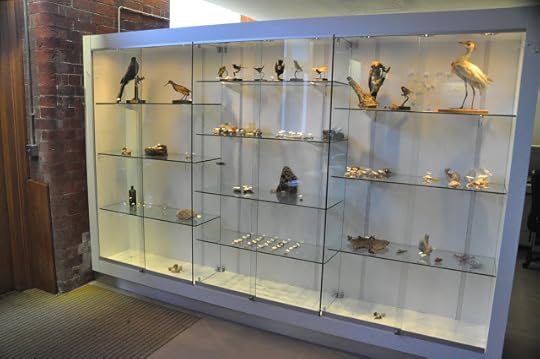 Helen White's Installation, Bury Art Gallery, Bury England
Helen White's Installation, Bury Art Gallery, Bury EnglandOne of the most beautiful pieces at the exhibits for the Text Festival in Bury, England, was Helen White's installation. Upon the many glass shelves of a large vitrine on the lowest floor of the art gallery, she had placed constellations of (primarily natural) artifacts from the museum's own collection, and then she pinned little labels in place on or beside these objects.
What is amazing about this temporary art piece is how beautifully she arranged these small obsessively collected objects and then how beautiful were the labels she attached to them. The labels were never obvious (a shell was never called "shell"). Instead, the words she chose defined the words aslant and poetically, creating a esthetic experience I thought probably the most supreme of the entire show.
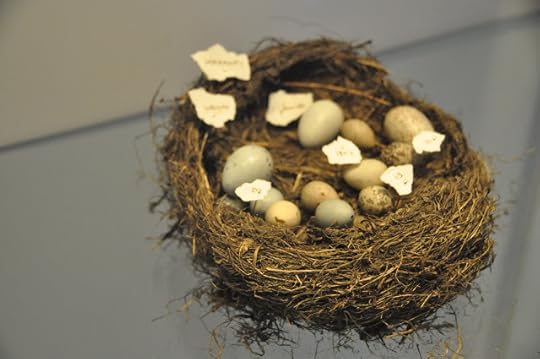
Sometimes the pictures I took did not focus on the words themselves, as in the case of this picture, focused on the forward-jutting lip of this bird's nest. This collecting mania I mentioned is clear in this object. Birds' nests don't change much over time, so the saving of one is an interesting action of keeping the world from disappearing, and this one is filled with eggs of different birds, making it a kind of United Nations of ornithology. I wonder exactly how Helen was set loose in the Bury Museum's collections to identify the objects she wanted to use and to label.
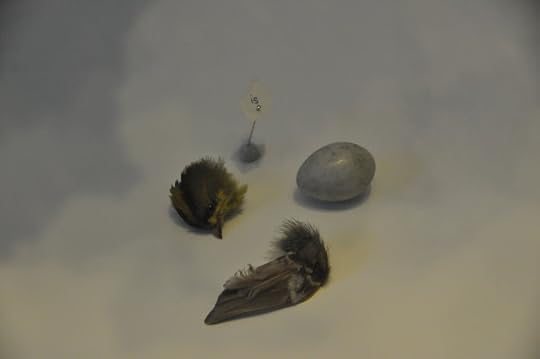
Related to the bird's nest is this spooky little triad: the head of a small, probably immature, bird, and its right wing (but no more of its body), and an egg that represents its beginning and its now-lost wholeness, and all of this tagged with the single word "is." For, even in this state of fragmentation, the bird still is.
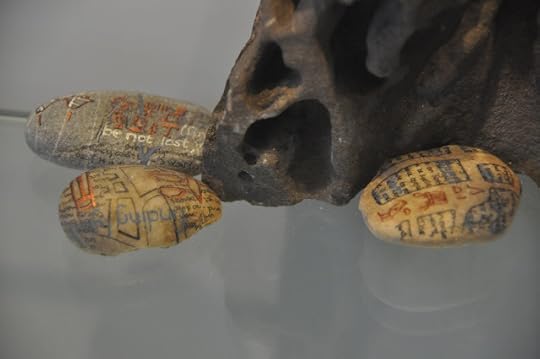
Only one of the constellations of objects does something with objects not from the Bury Museum's collection, and that is this one, which includes a rock that is joined by a trio of rocks painted and worded by Helen herself. These were hard to read, but they serve to be reminders of humankind, cultural objects noting the interests and intellects of humans in the cold and thoughtless natural world.
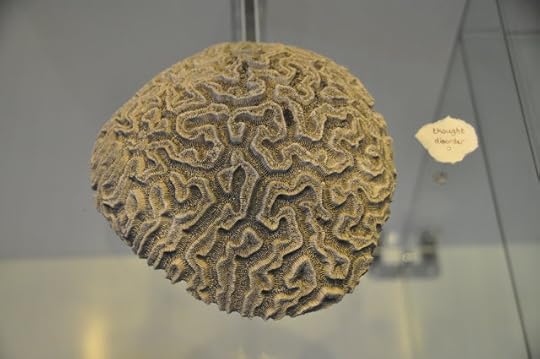
And it is clear that Helen knows what brain coral is when she calls it "thought disorder." Here is a faux brain, the remains of thousands of small animals left in the form of coral, but nothing that can think, nothing that could ever think. This is indeed a meaningful semiobject, one in which the object and the word for it vibrate with the warmth made when meaning and senselessness rub together.
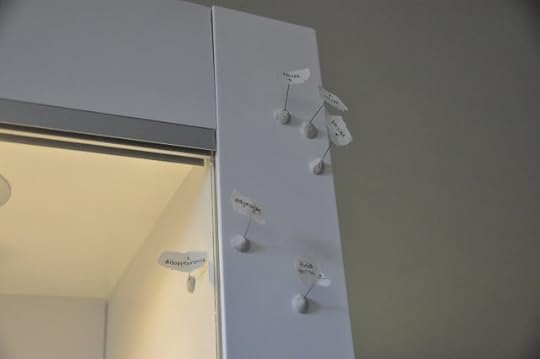
I almost missed it, but Helen also labeled a constellation of nothings outside the cabinet, giving its labels like "resist," "insist," and "persist" (the objects resist definition, the labels insist otherwise, but the connections between the two and the objects alone and themselves persist), and "disappearance" (because the labeled windowglass is not about being seen but being seen through, and because this large artwork will be dismantled after a few months).
And that is too bad. I could have spent an hour thinking about this piece. It is rich and beautiful and full of insight and humor (like the empty shelf labeled "Atlantis"), and it is about the visuals as well as the words. It is a great visual poem, radiating intelligence and meaningfulness even as it questions the possibility of unshakeable meaning. My thanks to Helen for letting us peek into her mind for a bit.
ecr. l'inf.
Published on May 04, 2011 20:42
No comments have been added yet.



